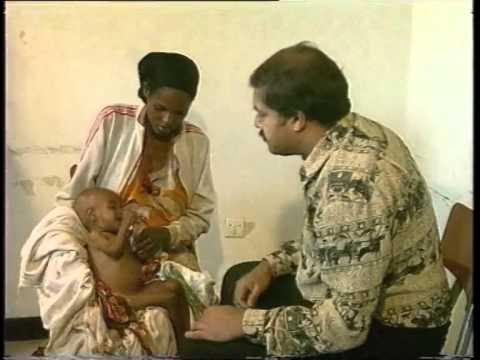IMNCI 1 | Pneumonia
Summary
TLDRThe video script discusses the importance of addressing diarrhea, pneumonia, and thrush in children, along with providing a link to a video for better clarity. It emphasizes the Integrated Management of Childhood Illness (IMCI) program, aimed at reducing child mortality and improving health development. The script outlines strategies like exclusive breastfeeding, nutritional counseling, and vitamin supplementation to prevent malnutrition and diseases. It also covers the classification of health issues into green (home care), yellow (specific treatment needed), and pink (hospital admission required), providing a structured approach to child health management.
Takeaways
- 😀 The most important issues discussed are diarrhea, pneumonia, and throat infections, with an emphasis on extra care for air problems like fever.
- 👶 The focus is on child health, aiming to reduce child mortality and morbidity, particularly in developing countries.
- 📈 The script mentions the launch of an IMCI (Integrated Management of Childhood Illness) program, highlighting its importance in managing child health.
- 🌐 The program prioritizes addressing the top 5 conditions affecting children, such as acute respiratory infections, diarrhea, malaria, measles, and malnutrition.
- 🍼 It emphasizes the importance of breastfeeding for newborns, suggesting starting within the first hour and continuing for at least a year.
- 💊 The script discusses the need for vitamin A and iron supplementation for children and the treatment of worm infestations.
- 🏥 There's a classification system for illnesses, with green indicating supportive care at home, yellow for specific treatment within a clinic, and pink for hospital admission.
- 📝 The script provides a detailed assessment process, including questioning the mother about the child's symptoms and checking for general danger signs.
- 🩺 It outlines the steps for assessing respiratory rates and the importance of recognizing signs like chest indrawing and stridor in children.
- 💼 The script concludes with instructions for healthcare providers on how to classify and treat children based on the assessment, including when to admit to the hospital and when to provide home treatment.
Q & A
What are the most important issues discussed in the script related to children's health?
-The script primarily discusses diarrhea, pneumonia, and throat infections as the most important health issues affecting children. It also mentions the importance of addressing these issues to reduce child mortality and morbidity.
What is the purpose of the Integrated Management of Childhood Illness (IMCI) mentioned in the script?
-The purpose of IMCI is to prevent diseases in children, reduce child mortality, and improve health development by focusing on the most common causes of child deaths and providing appropriate treatment and care.
What are the five conditions that the script highlights as having a significant focus in child health?
-The script highlights Acute Respiratory Infections (ARI), Diarrhea, Malaria, Measles, and Malnutrition as the five conditions that have a significant focus in child health.
What strategies are discussed in the script for improving child health outcomes?
-The script discusses strategies such as exclusive breastfeeding for the first six months, complete immunization, and proper nutrition counseling for mothers to improve child health outcomes.
What is the significance of the classification system mentioned in the script for child health?
-The classification system is significant as it categorizes children's health issues into three categories: green (supportive care at home), yellow (specific treatment needed, possibly in an outpatient setting), and pink (board danger, requires hospital admission and urgent treatment).
What is the first step in assessing a child with suspected diarrhea according to the script?
-The first step in assessing a child with suspected diarrhea is to ask the mother about the child's symptoms, such as difficulty swallowing, cough, fever, vomiting, or diarrhea.
What are the general danger signs in children that the script suggests to check for?
-The script suggests checking for general danger signs such as inability to breastfeed or drink, lethargy, convulsions, and fast or difficulty breathing.
How does the script advise handling a child with fast breathing and chest indrawing?
-The script advises starting treatment for pneumonia with antibiotics and admitting the child to the hospital if they present with fast breathing and chest indrawing.
What is the significance of the respiratory rate in assessing a child's health as per the script?
-The respiratory rate is significant in assessing a child's health because it can indicate if the child is experiencing fast breathing, which may be a sign of pneumonia or other respiratory issues.
What actions does the script suggest if a child is not presenting any danger signs and is feeding well?
-If a child is not presenting any danger signs and is feeding well, the script suggests providing supportive care at home and monitoring the child's condition.
What is the importance of the 'spot' treatment mentioned in the script for children with mild symptoms?
-The 'spot' treatment is important for children with mild symptoms as it allows for immediate care at home, reducing the need for hospitalization and ensuring the child receives necessary treatment without delay.
Outlines

هذا القسم متوفر فقط للمشتركين. يرجى الترقية للوصول إلى هذه الميزة.
قم بالترقية الآنMindmap

هذا القسم متوفر فقط للمشتركين. يرجى الترقية للوصول إلى هذه الميزة.
قم بالترقية الآنKeywords

هذا القسم متوفر فقط للمشتركين. يرجى الترقية للوصول إلى هذه الميزة.
قم بالترقية الآنHighlights

هذا القسم متوفر فقط للمشتركين. يرجى الترقية للوصول إلى هذه الميزة.
قم بالترقية الآنTranscripts

هذا القسم متوفر فقط للمشتركين. يرجى الترقية للوصول إلى هذه الميزة.
قم بالترقية الآنتصفح المزيد من مقاطع الفيديو ذات الصلة
5.0 / 5 (0 votes)






